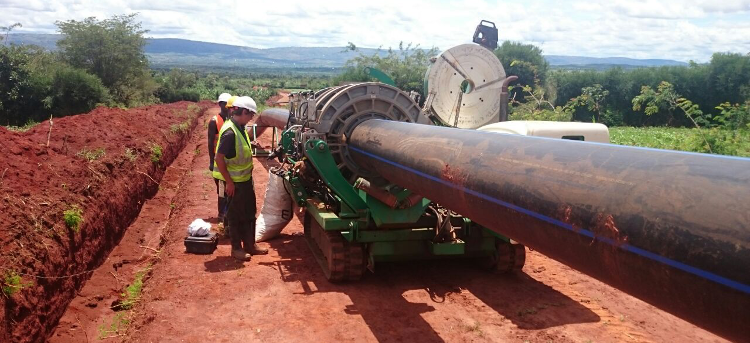1.HDPE piping is perfect for demanding applications.
HDPE pipes are ideal for high-demand projects due to their durability and excellent temperature, chemical properties and impact resistance. For example, HDPE pipes are a good choice for projects involving fire system supply lines, water, sewer, and gas lines, as well as electrical and communications lines and cables.
In fact, HDPE pipelines have a long history of use in the oil, mining and gas industries because they can transport chemicals, wastewater, compressed gas, mud and hazardous waste. After all, pipes are rust -, corrosion -, chemical - and UV-resistant, immune to bacteria and less likely to leak.
Also, in addition to being durable, HDPE is surprisingly flexible and lightweight, making it easier to transport and install than other materials. This not only makes these pipes and fittings easier to use (and safer), but also reduces the time and labor required to install them.
2.HDPE pipes are ideal for drainage.
No matter what type of drainage application you need, HDPE drainage system is the ideal choice. These HDPE pipes and fittings are manufactured to the latest industry standards. In addition, they can be assembled into fused joints, butt joints, flanges or rubber ring fittings.
When you choose an HDPE drainage system from a high quality, reputable plastics manufacturing company, you will find that it is resistant to chemicals and high temperatures, as well as flexible and low noise.
Because of these characteristics, these HDPE drainage systems are particularly suitable for use in residential and industrial buildings, laboratories, hospitals and hotels.
3.HDPE pipes and fittings rarely require maintenance.
In addition to all the other benefits provided by this material, HDPE pipes and fittings have the lowest annual maintenance rate compared to other plumbing materials. This should come as no surprise, as HDPE is very tough, rugged, and extremely durable.
So whether your priorities are long service, ease of installation, flexibility, chemical resistance, or sustainability, you can be sure that HDPE piping and fittings will meet all your requirements.
4.HDPE accessories are also very suitable for various projects.
In many cases, your project may require both plumbing and fittings. In both cases, HDPE is the ideal material because HDPE accessories are also considered highly reliable. In fact, the HDPE accessory is essential for piping high pressure fluids. As a result, HDPE fittings are commonly used in projects related to mining, irrigation and municipal drinking water facilities.
Because they are used in a wide range of projects, there are over a dozen different styles of HDPE accessories. This means that no matter what your project is, you should be able to find the HDPE accessories you need; However, custom accessories can also be made for you.
The types of HDPE fittings available include elbow die applications (pipeline, natural gas and drinking water projects), reducer applications (engineering, industrial and construction projects), long-neck applications (structural, natural gas and hydraulic engineering) and wafer butterfly valve applications (liquid and natural gas projects).
Similar to HDPE tubes, there are HDPE accessories available in a range of sizes on the market. The size of the fitting you need will depend on the size of the pipe it is connected to (usually between 20 mm and 650mm).
5.HDPE piping is the most sustainable option.
In addition to being the most practical and powerful option on the market, HDPE pipes are also the most sustainable.
Unlike other plumbing materials, HDPE is highly biodegradable and easily recycled, reducing the material's impact on the environment. In addition, the new HDPE pipes are made from 25 to 100 percent recycled materials, made from pre-consumer materials.
And, as if that weren't enough, the HDPE pipe production process also requires a fraction of the energy needed to produce other pipe materials, such as steel.
For all these reasons, HDPE pipes are considered the most environmentally friendly option on the market. HDPE is considered a sustainable building material, as evidenced by the fact that LEED certification is required.
Final Thoughts
Choosing HDPE plumbing and fittings is an important decision that will have a lasting impact on your project.
For this reason, it is strongly recommended that you choose to purchase these pipes only from reputable plastic manufacturing companies with many years of experience and a large number of satisfied customers. Unfortunately, if you don't choose the highest quality pipe, you can't guarantee all the benefits that high quality HDPE pipes provide.
If you have any questions about choosing the right HDPE pipes and fittings for your project, please contact a reputable plastic manufacturing company and ask about their products.
Post time: Nov-25-2022





